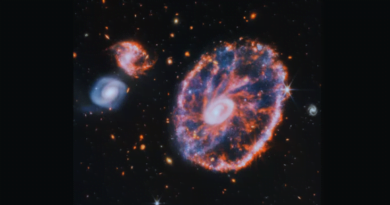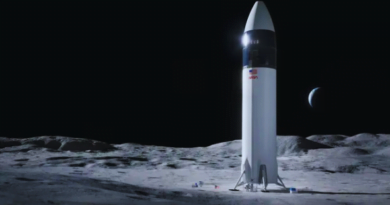Space Junk Threatens Catastrophic Collisions in Earth’s Orbit

A Potential threat emerges as space junk could spark a chain of disastrous collisions above Earth’s atmosphere.
The Earth is encircled by a swift-moving cloud of human-made debris, hurtling at speeds of up to 8km per second – nearly five times the speed of a bullet. Our perspective of Earth and the night sky has evolved; we now recognize that space is not a remote expanse but near space.
Satellites, vital for communication, navigation, and observation, have intricately linked Earth and space, becoming indispensable for modern society. Nearly half of the world’s nations now own satellites, turning space into an extension of Earth’s environment. Understanding the constraints of this new environment is imperative for sustainable space activities, ensuring that upcoming generations can leverage the opportunities it offers.
Joanne Wheeler, leading the Earth & Space Sustainability Initiative (ESSI) funded by the UK Space Agency, is steering efforts to establish principles for responsible space use. ESSI involves global collaboration with industries, universities, governments, and organizations invested in space exploration.
While the principles encompass the entire satellite lifecycle, a significant emphasis is placed on preventing space debris. As of June 2023, over 15,000 satellites have been launched into orbit, with Low Earth Orbit (LEO) hosting around 8,600 satellites. LEO, being the most congested region, also harbors around 13,000 known debris pieces, posing collision risks to operational satellites.
Space cleanup initiatives, such as Astroscale and ClearSpace, are at the forefront of active debris removal (ADR). Astroscale’s ELSA-d mission showcased the ability to capture satellites using a magnetic arm, while ClearSpace plans the world’s first ADR mission in 2026, targeting a piece of space debris.
The urgency to clean up space intensifies with the rise of satellite mega-constellations, including SpaceX’s Starlink, OneWeb, and Project Kuiper. Starlink, with over 4,000 satellites as of June 2023, signifies a substantial increase in orbiting objects. Sustainable solutions involve both active debris removal and designing future satellites for extended service lives.
Regulation emerges as a pivotal driver for space sustainability, compelling companies to actively participate in space debris cleanup. The Earth & Space Sustainability Principles laid out by ESSI aim to incentivize good behavior by integrating sustainability commitments with financing, insurance, and licensing requirements.
Negotiations are underway to elevate ESSI’s principles into universally recognized industrial standards. As we stand at a critical juncture in history, witnessing an unprecedented surge in satellite launches, it becomes crucial to balance the benefits of space utilization against the environmental and human costs.








